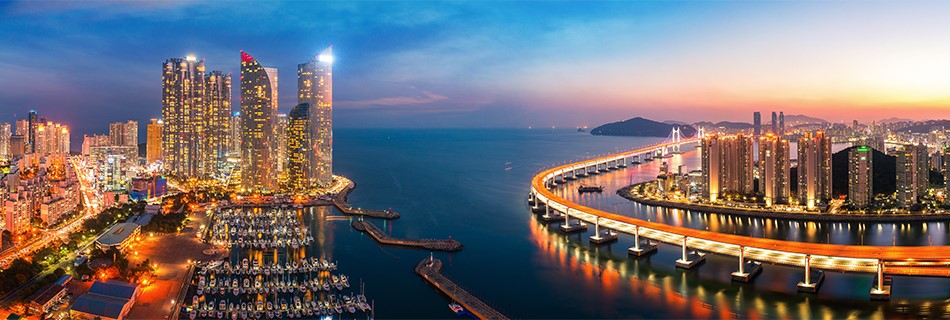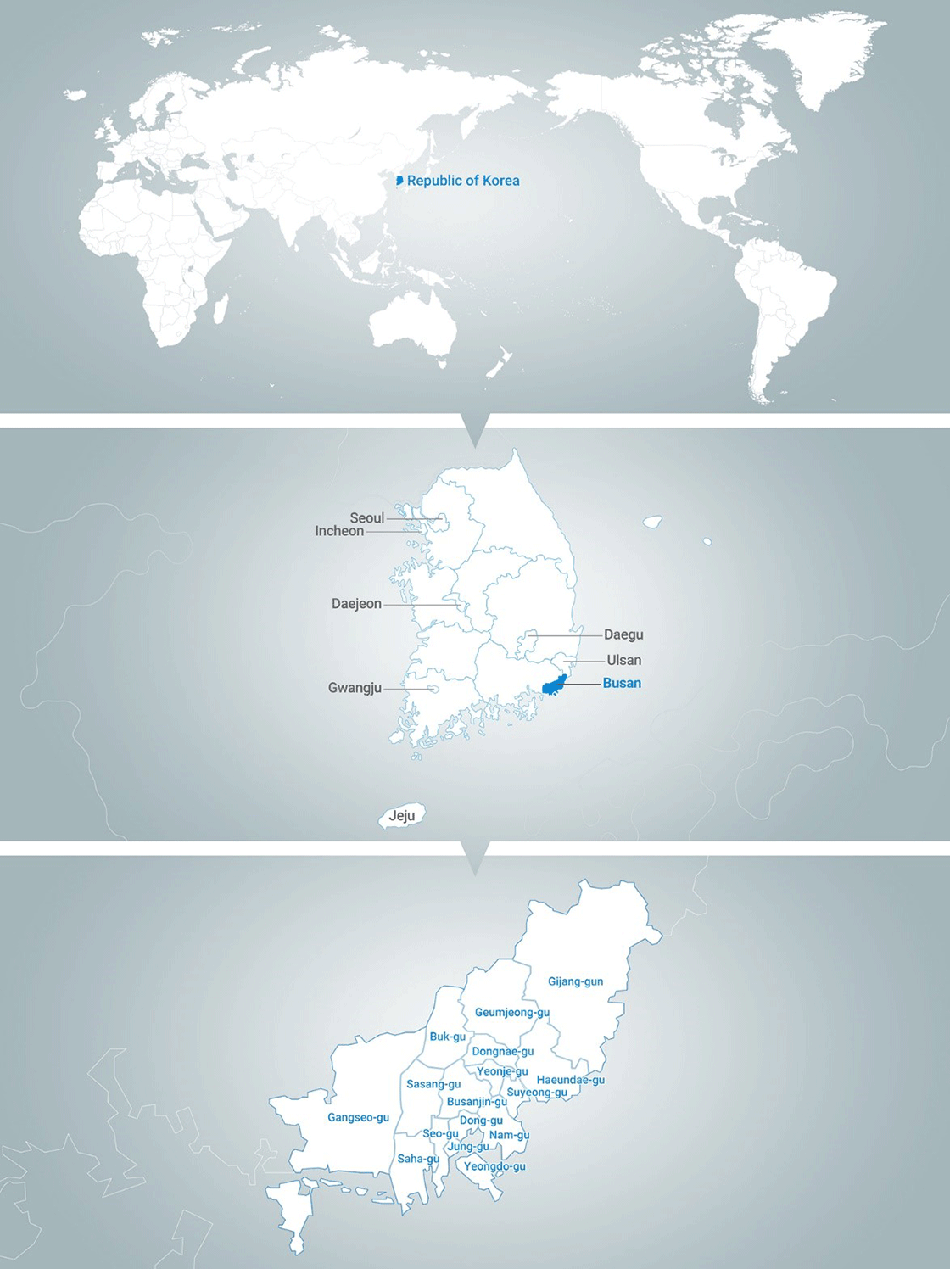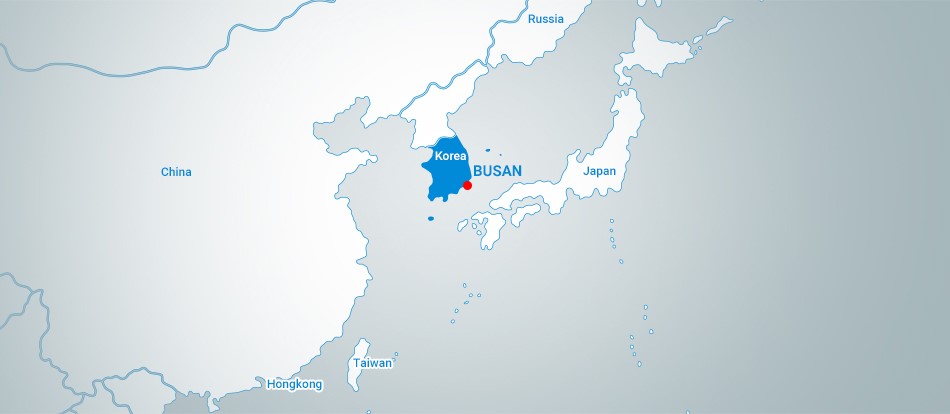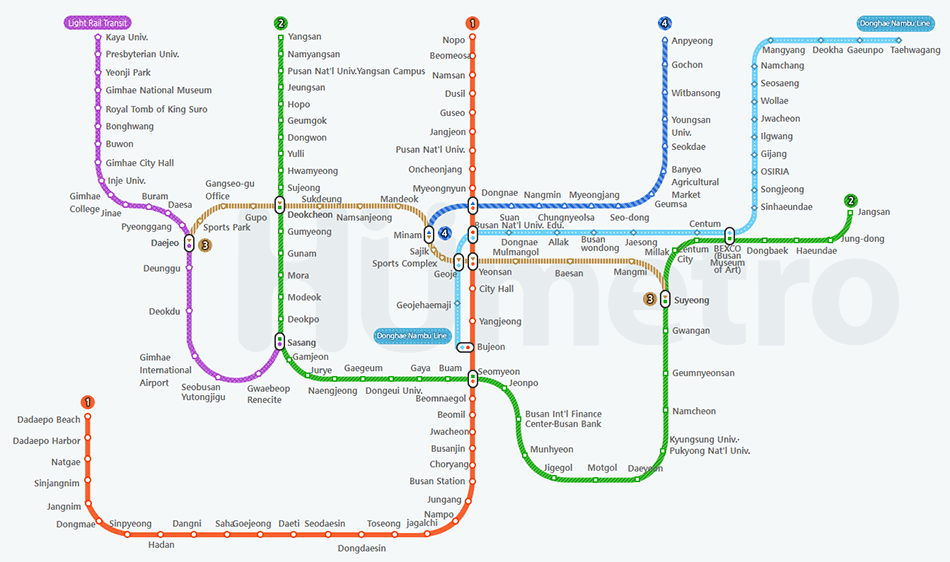

Busan is the 2nd largest city and number one trading hub in Korea, with a population of 3.4 million and a total area of 770.2 square kilometers as of 2021. Since opening Korea’s first international port in 1876, the city has become a hub of trade, commerce and industry.
Global events including the Asia-Pacific Economic Cooperation conference, Busan International Film Festival and Busan International Fireworks Festival, as well as various sea-related festivals are held throughout the year. The city is also a tourist destination and home to Asia’s largest department store, Haeundae beach, and a yacht marina.
Located on the southern tip of the Korean Peninsula, Busan is a historic city that served as the temporary capital during the Korean War and refuge for men, women and children fleeing the North to build new lives.

Busan, a city with beautiful mountains, rivers and the sea, is also an important cultural city. With the Nakdonggang River bordering the city and picturesque scenery gaining nationwide attention, like that found in Haeundae, the city serves as a major nexus of cultural activities in the region. Busan is also Korea’s first international port city. Its location enables the city to serve as a main gateway for the Korean Peninsula as well as the rest of the Northeast Asian region.

Geographically, Busan has the Straits of Korea to its south; Ulsan to the north; and Gimhae to the west. Cities that share almost the same latitude with Busan include Jinhae and Gwangju in Korea, as well as Tokyo, Algiers and Oklahoma City internationally. Busan is eight hours ahead of Greenwich Mean Time (GMT). As for its geopolitical significance, the city is located at the southern tip of the landmass connecting Asia, Siberia and Europe. It also serves as a main gateway to the Pacific Ocean. This strategic location places the city at the center of international sea routes.
Busan is located at the southeastern most tip of the Korean Peninsula, within a mid-latitude temperate zone producing seasonal winds. It has four seasons: spring, summer, fall and winter. The annual average temperature is 14.9°C. The annual average precipitation is 1,441.9mm. Busan has strong winds compared to other areas in Korea. Spring begins in March and ends in late June. Cherry blossom trees bloom in late March and the temperature is very comfortable from April to June. The rainy season at the end of June and July signals the beginning of the coming summer heat. The highest mean temperature of around 32°C is experienced at the end of July through mid-August. Fall lasts from early September through late-November. The weather is nice and cool during this time of year because of the continental high atmospheric pressure. Winter starts by the end of November and continues until February, but Busan rarely receives any snowfall. The average winter temperature is 3.8°C. Tourists can enjoy Busan throughout all the seasons because of its nice weather and beautiful scenery. In the summer, the city, particularly Haeundae and Gwangalli beaches, become crowded with visitors who come to enjoy the beautiful and laidback lifestyle Busan residents have come to love.
From the opening of its port in 1876, the port city of Busan quickly developed into a hub of trade, commerce and industry. Such a development resulted in a rapid increase in its population, which had already reached 200,000 by 1936. The next major leap in Busan's population came with the breakout of the Korean War, which resulted in an endless stream of refugees into the city. As a result, the population of Busan exceeded 1 million by the end of 1955. Another factor that spurred the population increase was government policy targeting economic growth. People from rural areas continually moved into the city looking for jobs. By the end of 1994, there were approximat4ely 4 million people who called Busan their home. Since 1995, the population slowly began to decrease. As of December 2022, Busan was home to 3,367,246 people, a decrease of 28,863 compared to 2021. The male population stands at 49 percent, while the female population comprises 51 percent. The population of foreign residents living in Busan stands at 49,434, an increase of 3,705, compared to 2021.

Spring begins in early March and ends in late-June. As the Siberian High begins to dissipate, the temperature increases. Busan possesses an average temperature of 14.9℃ which is higher than some neighboring cities like Ulsan and Tongyeong. However, due to a strong spring wind (average 4.4m/s), the heat index remains very low which can sometimes make for a cool beginning to the season. In late March, apricot flowers and dandelions begin to bloom while in April, peach blossoms, swallows and frogs can be seen. Daily temperature ranges can vary widely and severe stretches of abnormally dry weather, periods of yellow dust and late frosts also commonly occur during the spring months.

Summer starts at the end of June and ends in early September. The rainy season starts the end of June and lasts until the beginning of August. Precipitation during the summer months accounts for 50 to 60 percent of the total for the year.
The average temperature in July is 23.9℃ and daily temperature ranges are very small at 5.3℃. Summer highs hit their peak at the end of July through mid-August when temperatures climb to 32°C. The city also experiences many tropical nights during this time as nighttime temperatures hover around 25℃.

Fall begins in early September and lasts through late November. Continental high pressure brings nice clear weather to the Busan area. In September, due to changing weather patterns, nighttime and morning lows both start to fall, with the average temperature for the month hitting 21.8℃ and 17℃ in October. From November, the temperature starts to drop suddenly due to strong, cold northwesterly seasonal winds.

Winter runs from the end of November and continues until the end of February with an average temperature of 3.8°C. Rising amounts of cold air over Siberia force bitter cold northwesterly monsoons down on the peninsula resulting in temperatures below the freezing mark. Due to changing local weather patterns, Busan will typically experience three cold days followed by four warm days throughout the winter months.
See more information: https://www.busan.go.kr/eng/index
